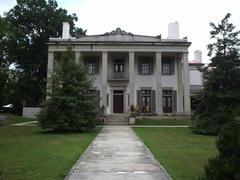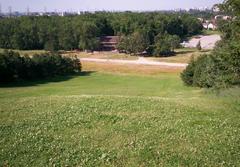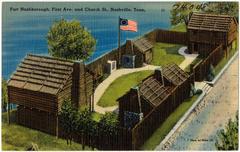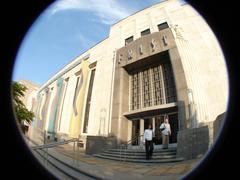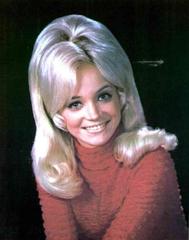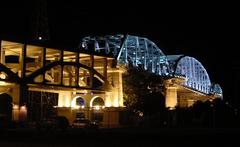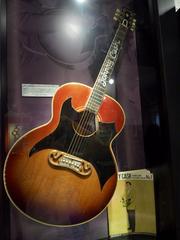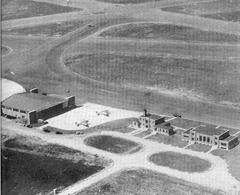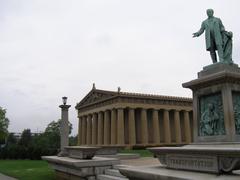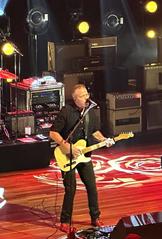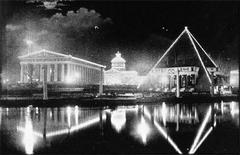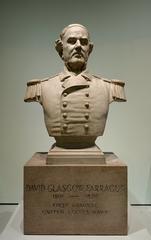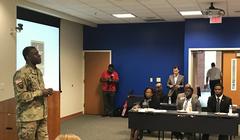
Nashville City Cemetery Visiting Hours, Tickets, and Historical Sites Guide
Date: 04/07/2025
Introduction
Nestled just south of downtown, the Nashville City Cemetery is the city’s oldest continuously operated public burial ground, established in 1822. Serving as the final resting place for more than 20,000 individuals—including city founders, Civil War soldiers, African American community members, and cultural figures—the cemetery is both a vital historical archive and a serene outdoor museum. Its inclusive burial practices, rare for its time and region, make it a unique reflection of Nashville’s evolving social fabric. Thanks to community-led preservation, the cemetery is now listed on the National Register of Historic Places and offers daily opportunities for exploration and education.
This comprehensive guide provides detailed insights on the cemetery’s history, significance, visitor information, and practical tips to ensure a meaningful and respectful visit.
Table of Contents
- Introduction
- Historical Overview
- Architectural and Landscape Features
- Visitor Information
- Community Engagement and Events
- Frequently Asked Questions (FAQ)
- Conclusion
- References and Further Reading
Historical Overview
Early Establishment and Growth
The Nashville City Cemetery was established in 1822, following the city’s purchase of four acres from Richard Cross for $1,200, with the intent to create a permanent public burying ground (Nashville City Cemetery History). The cemetery quickly expanded in response to the city’s growth, eventually covering up to 28 acres by the mid-19th century, though today it encompasses about 19 acres (Nashville City Cemetery Master Plan, PDF).
Social and Cultural Integration
From its inception, the cemetery was notable for its relative inclusivity. People of all races, religions, and economic backgrounds were interred here, a rarity in the antebellum South. Approximately 6,000 African Americans—free and enslaved—are buried in the cemetery, with a dedicated section in the southwestern part (Nashville Public Library). The cemetery thus provides a window into Nashville’s complex social history and evolving attitudes toward race and class (Wikipedia: Nashville City Cemetery).
Notable Figures and Graves
The cemetery is the final resting place for many prominent Nashvillians, including:
- James and Charlotte Robertson: Recognized as founders of Nashville.
- William Driver: The captain who coined the term “Old Glory” for the American flag (The Clio).
- Mabel Lewis Imes and Ella Sheppard Moore: Original members of the Fisk Jubilee Singers, representing Nashville’s African American heritage.
- Military Figures: Soldiers from the American Revolution, Civil War, and other conflicts, including both Union and Confederate soldiers.
- Political Leaders: Tennessee governors, mayors, and legislators.
- Everyday Citizens: Artisans, immigrants, penitentiary inmates, and others, reflecting the full spectrum of Nashville society (Nashville City Cemetery Overview).
Civil War and Reconstruction Era
During the Civil War, the cemetery served as a burial ground for soldiers from both sides. Many Union and Confederate graves were later relocated to national cemeteries, but numerous original burials remain. The turmoil of the era led to the loss of some records, but post-war documentation and preservation efforts have safeguarded much of the site’s history (Interment Records; Nashville City Cemetery Master Plan, PDF).
Decline, Restoration, and Preservation
By the mid-20th century, decades of neglect left the cemetery in disrepair. Restoration began in earnest in 1958, leading to its 1972 listing on the National Register of Historic Places (Wikipedia: Nashville City Cemetery). Since then, preservation has been championed by the Nashville City Cemetery Association, the Metropolitan Government, and community volunteers, resulting in ongoing restoration projects, educational programming, and public engagement (Nashville City Cemetery Association).
Architectural and Landscape Features
The cemetery is renowned for its funerary art and landscape design:
- Monuments and Vaults: Ranging from simple markers and box tombs to elaborate obelisks and mausoleums, many crafted from native limestone and marble.
- Keeble Building: A notable 1947 brick structure designed by Edwin A. Keeble (Keeble Building).
- Arboretum: Recognized as a Nashville Tree Foundation Arboretum, the grounds are home to mature trees and seasonal flower beds (MGofDC).
- Interpretive Signage: Visitor kiosks and markers provide historical context and highlight the stories of those interred (Interpretive Signs).
Visitor Information
Location and Directions
Address: 1001 4th Avenue South, Nashville, TN 37203
Adjacent to downtown and easily accessible by car, rideshare, or public transportation (Nashtoday).
Visiting Hours
- Open daily: Dawn to dusk (approximately 8:00 AM to 5:00 PM, but check for seasonal changes).
Admission and Tickets
- Admission: Free for self-guided visits.
- Tickets: Special events and guided tours may require advance registration and a nominal ticket fee (Nashville City Cemetery Association Events Page).
Guided and Self-Guided Tours
- Monthly Free Guided Tours: Offered on the second Saturday each month (Nashtoday).
- Lantern-Led Tours: Popular in October, featuring the cemetery’s legends and ghost stories (Ghost City Tours).
- Self-Guided Tours: Available through brochures, printable maps, and a mobile app highlighting 29 key stops.
- Special Events: Scavenger hunts, history walks, and educational programs for schools and families (Tennessee State Museum).
Accessibility
- Pathways: Many paved and accessible for wheelchairs, though some areas are uneven or grassy.
- Assistance: Visitors with mobility concerns should contact the cemetery office for recommendations and support.
Travel Tips
- Dress Appropriately: Wear comfortable shoes and weather-appropriate attire; summers are hot and humid, autumn is ideal for walking tours.
- Bring Water: Especially in warmer months, as on-site facilities are limited.
- Photography: Allowed for personal use; the historic monuments and mature trees offer excellent photo opportunities.
- Restrooms: Limited on-site; plan accordingly.
Community Engagement and Events
The cemetery is a vibrant site for community involvement:
- Volunteer Days: Gardening and restoration projects with the Master Gardeners of Davidson County (MGofDC).
- Educational Programs: Used by schools and genealogy groups for history lessons and research.
- Annual Lantern Tours: Highly popular October events—advance registration is recommended (Nashtoday).
- Heritage Festivals and Memorial Events: Celebrate the cemetery’s history and its ongoing preservation.
Frequently Asked Questions (FAQ)
Q: What are the Nashville City Cemetery visiting hours?
A: Open daily from dawn to dusk, generally 8:00 AM to 5:00 PM.
Q: Is there an admission fee or need for tickets?
A: Admission is free for self-guided visits. Special events and guided tours may require tickets.
Q: Are guided tours available?
A: Yes, monthly free tours and special lantern tours are offered. Check the official website for event details.
Q: Is the cemetery wheelchair accessible?
A: Many paved paths are accessible, but some areas remain uneven; assistance may be needed.
Q: Can I take photographs?
A: Yes, personal photography is encouraged. Commercial photography requires permission.
Q: Are pets allowed?
A: Pets are generally not permitted to maintain respect for the site.
Q: Where can I park?
A: Free on-site parking is available, with additional street parking nearby—observe posted signs.
Conclusion
The Nashville City Cemetery is more than a burial ground—it’s a dynamic historical resource, arboretum, and community space. Its inclusive history, architectural artistry, and tranquil atmosphere make it a must-visit for anyone interested in Nashville’s heritage. With free daily access, a variety of guided and self-guided tour options, and numerous educational and community events, the cemetery welcomes visitors from all walks of life.
Plan your visit by consulting the official Nashville City Cemetery website, downloading tour maps or mobile apps, and exploring related historical attractions nearby. Support ongoing preservation by attending events or volunteering, and reflect on the diverse stories that have shaped Nashville through the serene and storied grounds of this remarkable landmark.
References and Further Reading
- Nashville City Cemetery History, 2024, Nashville City Cemetery Association
- Nashville City Cemetery Overview, 2024, Nashville City Cemetery Association
- Wikipedia: Nashville City Cemetery, 2024
- Nashville City Cemetery Master Plan, 2006, Metropolitan Historical Commission
- Nashville.gov: Historic Preservation Department, 2024
- Nashville Public Library: Tales from the Crypt – Nashville City Cemetery Edition, 2022
- Nashtoday: How to Explore Nashville City Cemetery, 2024
- Ghost City Tours: Haunted Nashville City Cemetery, 2024
- MGofDC: Master Gardeners of Davidson County City Cemetery Garden, 2024
- The Clio: William Driver and Old Glory, 2024
- LA History Girl: The Three Nashville Cemeteries You Can Not Miss, 2024
- Condé Nast Traveler: Essential Things to Know Before You Visit Nashville, 2024
- Nashville City Cemetery Association Events Page, 2024



